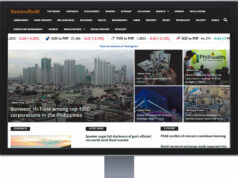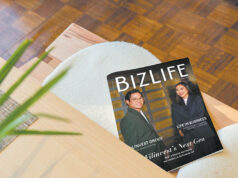A day in the life of Uber and Grab drivers
By Bjorn Biel M. Beltram, Special Features Writer
Before becoming an Uber driver full-time, Ismael Mamaril Villanueva spent 30 years working for the government at the Bureau of Customs. Tired of the negative publicity that had plagued the bureau since time immemorial, and his children having finished their education, he decided that a change of pace was what he needed, a relief that Uber had provided him.
“I could feel that I was getting old,” Mr. Villanueva told BusinessWorld in an interview. “With Uber, I could take an early retirement.”
Coming upon the now-closed Uber Partner Center along Shaw Boulevard in Mandaluyong City, he lamented that the ride-hailing services firm had ceased operations in the Philippines. In his own words, he was an “Uber-loyal” for more than a year now.
Since he had his own car, Uber provided him with a relatively easy job that he can do on his own time without answering to anyone. He also enjoyed receiving compliments in the Uber app from his customers (Great Conversation! Excellent Service!), a feature that the Grab app sorely lacks.
At the end of March this year, the ride-sharing firm Grab announced that it has acquired its primary competitor Uber’s Southeast Asia operations, leaving many drivers like Mr. Villanueva without much choice but to switch platforms. As of April 16, Uber Philippines has shut down despite orders from the Philippine Competition Commission (PCC) to continue operating independently pending the antitrust body’s review.
Grab (MyTaxi.PH, Inc.) has now become the biggest ride-sharing app in the Philippines, an event that the PCC fears will lead to a “virtual monopoly” and increased prices.
Jeffer Carlo Ragil, who had been a driver for both Uber and Grab, fears the same. “I really don’t know what will happen,” he admitted in an interview.
“It used to be that depending on demand and pricing, you can choose between the two apps. There was a choice. If there’s just one, then the consumers could suffer,” he said.
Mr. Ragil noted that Grab is noticeably better for the drivers due to higher prices, lower thresholds for incentives (Grab drivers get bonuses for making 40-50 trips a week, as opposed to Uber’s 60-70), and the ability to view their riders’ destinations and cancel trips. However, for the longest time, Uber had a lot more demand.
“What works for us drivers isn’t the same as what the customers want,” he said.
A worthwhile service
Mr. Ragil chose to start driving full-time after spending 11 years working for the car battery manufacturer Motolite. It was not particularly hard to make the switch, he said, as both Uber and Grab had simple registration processes for drivers. He already had the car; all he needed was the paperwork to start driving.
“I like the freedom. The feeling that my time is my own. I could choose not to work whenever I want to. Right now, I’m waiting on a relative to finish a dialysis, so I thought why not work for an hour or two?,” he said.
“The people you get to meet also make the job worthwhile,” he said, telling the story of how he once had the pleasure of escorting members of the Mocha Girls to the airport one early morning.
“I remember it because it was one of the smoothest trips I’ve ever had. I thought we wouldn’t make it at first, but there was almost no traffic. We made the flight with time to spare. I couldn’t believe it, first because I was driving the Mocha Girls, and second, because EDSA was empty.”
Seizing opportunity
Rogelio Rivera, who had worked various jobs in the past, the most recent of which had been a salesman, found that he was drawn to the unpredictability of working for Uber and Grab.
“I get easily bored,” he said in an interview, noting that he rarely stays in one job for over a year. “I like being challenged.”
Mr. Rivera doesn’t own the car that he drives, and so he needs to meet a boundary each day if he’s to make any profit. Along with the fuel expenses, that means he has to make over P4,000 a day if he wants to see any money for himself.
“It’s not hard. Plus it lets me practice my driving,” he said. “I haven’t really driven that much before because I had a motorcycle.”
Mr. Rivera admitted that his goal was to be good enough at driving vehicles with manual transmission that he could take up a job driving trucks for a construction firm near his place in Rodriguez, where many real estate firms are developing new properties.
He argued that his goal is the reason why he had no qualms about switching to Grab after driving under Uber for three months. Filipinos are resourceful people, he said, and if Grab ended up becoming a monopoly and becoming bad for the public then Filipinos will find a way to adapt.
“I try to take any opportunity that’s presented to me,” he said. “That’s what all any of us can do, given whatever situation.”



